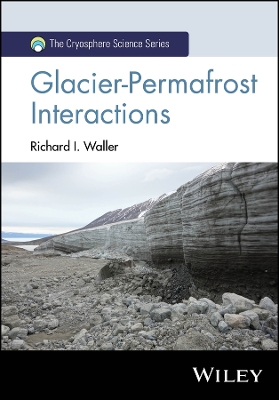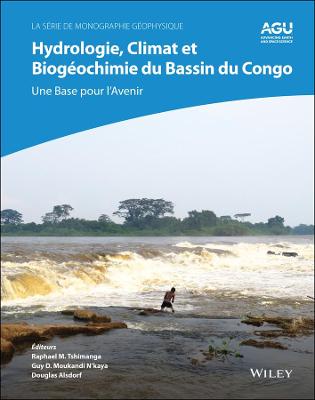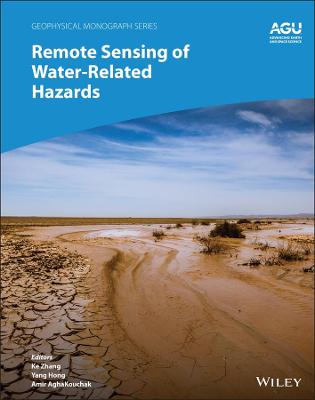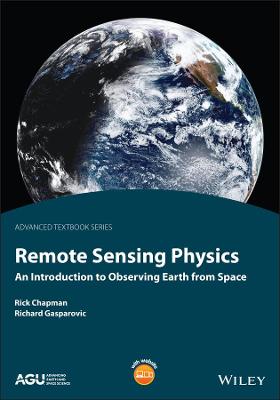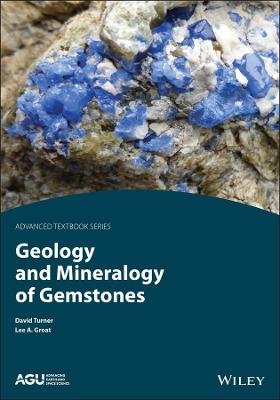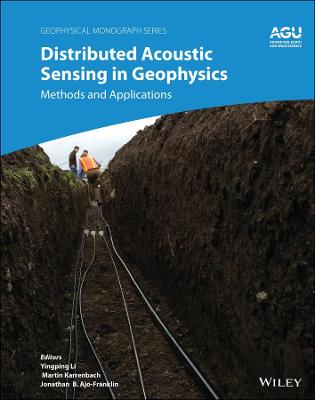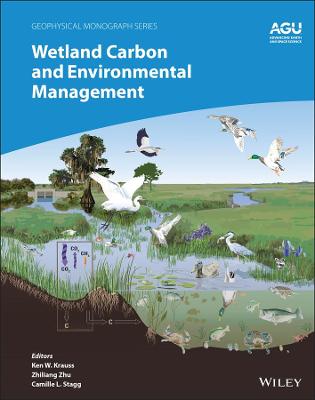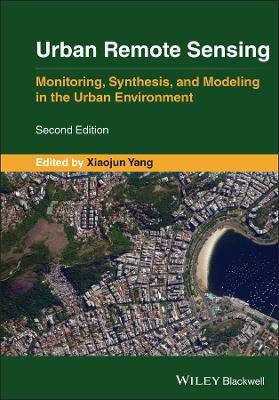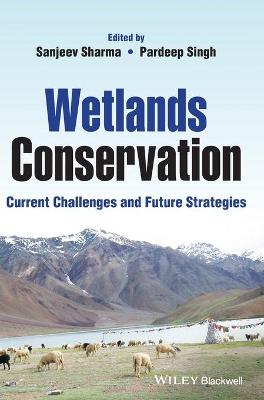Environmental and Low-Temperature Geochemistry
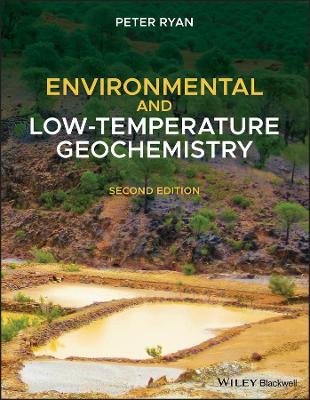 -15%
portes grátis
-15%
portes grátis
Environmental and Low-Temperature Geochemistry
Ryan, Peter
John Wiley and Sons Ltd
12/2019
384
Mole
Inglês
9781119568582
15 a 20 dias
1062
Acknowledgements xv
1 Background and Basic Chemical Principles: Elements, Ions, Bonding, Reactions 1
1.1 An Overview of Environmental Geochemistry - History, Scope, Questions, Approaches, Challenges for the Future 1
1.2 The Naturally Occurring Elements - Origins and Abundances 3
1.3 Atoms, Isotopes, and Valence Electrons 6
1.4 Measuring Concentrations 8
1.5 Periodic Table 12
1.6 Ions, Molecules, Valence, Bonding, Chemical Reactions 13
1.7 Acid-Base Equilibria, PH, K Values 18
1.8 Fundamentals of Redox Chemistry 20
1.9 Chemical Reactions 22
1.10 Equilibrium, Thermodynamics, and Driving Forces for Reactions: Systems, Gibbs Energies, Enthalpy and Heat Capacity, Entropy, Volume 23
1.11 Kinetics and Reaction Rates 31
Questions 35
References 36
2 Surficial and Environmental Mineralogy 39
2.1 Introduction to Minerals and Unit Cells 39
2.2 Ion Coordination, Pauling's Rules, and Ionic Substitution 41
2.3 Silicates 46
2.4 Clay Minerals (1 : 1 and 2 : 1 Minerals, Interstratified Clays) 55
2.5 Crystal Chemistry of Adsorption and Cation Exchange 60
2.6 Low-Temperature Non-Silicate Minerals: Carbonates, Oxides and Hydroxides, Sulfides, Sulfates, Salts 64
2.7 Mineral Growth and Dissolution 68
2.8 Biomineralization 72
Questions 72
References 73
3 Organic Compounds in the Environment 75
3.1 Introduction to Organic Chemistry: Chains and Rings, Single, Double, and Triple Bonds, Functional Groups, Classes of Organic Compounds, Organic Nomenclature 75
3.2 Natural Organic Compounds at the Earth Surface 87
3.3 Fate and Transport of Organic Pollutants, Controls on Bioavailability, Behavior of DNAPLS and LNAPLS, Biodegradation, Remediation 88
3.4 Summary 96
Questions 96
References 97
4 Aqueous Systems and Water Chemistry 99
4.1 Introduction to the Geochemistry of Natural Waters 99
4.2 The Structure of Water - Implications of Geometry and Polarity 103
4.3 Dissolved versus Particulate, Solutions, and Suspensions 104
4.4 Speciation: Simple Ions, Polyatomic Ions, and Aqueous Complexes 106
4.5 Controls on the Solubility of Inorganic Elements and Ions 106
4.6 Ion Activities, Ionic Strength, TDS 113
4.7 Solubility Products, Saturation 115
4.8 Coprecipitation 116
4.9 Behavior of Selected Elements in Aqueous Systems 117
4.10 Eh-pH Diagrams 119
4.11 Silicon in Solution 123
4.12 Effect of Adsorption and Ion Exchange on Water Chemistry 123
4.13 Other Graphical Representations of Aqueous Systems: Piper and Stiff Diagrams 128
4.14 Summary 131
Questions 131
References 131
5 Carbonate Geochemistry and the Carbon Cycle 133
5.1 Inorganic Carbon in the Atmosphere and Hydrosphere 133
5.2 The Carbon Cycle 141
Questions 154
References 155
6 Biogeochemical Systems and Cycles (N, P, S) 157
6.1 Systems and Elemental Cycles 157
6.2 Elemental Cycles 159
Questions 178
References 178
7 The Global Atmosphere: Composition, Evolution, and Anthropogenic Change 181
7.1 Atmospheric Structure, Circulation, and Composition 181
7.2 Evaporation, Distillation, CO2 Dissolution, and the Composition of Natural Precipitation 190
7.3 The Electromagnetic Spectrum, Greenhouse Gases, and Climate 191
7.4 Greenhouse Gases: Structures, Sources, Sinks, and Effects on Climate 194
Questions 198
References 199
8 Air Quality: Urban and Regional Pollutants 201
8.1 Air Pollution: Definitions and Scope 201
8.2 Oxygen and its Impact on Atmospheric Chemistry 202
8.3 Free Radicals 202
8.4 Sulfur Dioxide 204
8.5 Nitrogen Oxides 206
8.6 Carbon Monoxide 209
8.7 Particulate Matter 209
8.8 Lead (Pb) 210
8.9 Hydrocarbons and Air Quality: Tropospheric Ozone and Photochemical Smog 211
8.10 Stratospheric Ozone Chemistry 213
8.11 Sulfur and Nitrogen and Acid Deposition 215
8.12 Organochlorine Pesticides, Mercury, and Other Trace Constituents in the Atmosphere 219
Questions 222
References 222
9 Chemical Weathering, Soils, and Hydrology 225
9.1 Chemical Weathering of Primary Minerals in Soils 225
9.2 Products and Consequences of Chemical Weathering 231
9.3 Soil Profiles, Nomenclature, Soil-Forming Factors 239
9.4 Soils and the Geochemistry of Paleoclimate Analysis 243
9.5 Effects of Acid Deposition on Soils and Aquatic Ecosystems 245
9.6 Soils and Plant Nutrients 248
9.7 Saline and Sodic Soils 249
9.8 Toxic Metals and Metalloids 251
9.9 Organic Soil Pollutants and Remediation (Fuels, Insecticides, Solvents) 254
Questions 256
References 256
10 Stable Isotope Geochemistry 259
10.1 Stable Isotopes - Mass Differences and the Concept of Fractionation 259
10.2 Delta (?) Notation 261
10.3 Fractionation: Vibrational Frequencies, Mass, and Temperature Dependence 263
10.4 ?18O and ?D 267
10.5 ?15N 273
10.6 ?13C 275
10.7 ?34S 278
10.8 Nontraditional Stable Isotopes 280
10.9 Summary 285
Questions 285
References 286
11 Radioactive and Radiogenic Isotopegeochemistry 289
11.1 Radioactive Decay 289
11.2 Radionuclide Tracers in Environmental Geochemistry 294
11.3 Radionuclides as Environmental Contaminants 295
11.4 Geochronology 301
11.5 Radioactive Decay Methods of Dating Sediments and Minerals 309
Questions 315
References 315
Appendix I Case Study on the Relationships among Volatile Organic Compounds (VOCS), Microbial Activity, Redox Reactions, Remediation, and Arsenic Mobility in Groundwater 319
I.1 Site Information, Contaminant Delineation 319
I.2 Remediation Efforts 320
I.3 Sources of PCE and ARSENIC 320
I.4 Mobilization of Arsenic 322
References 323
Appendix II Case Study of PFOA Migration in a Fractured Rock Aquifer: Using Geochemistry to Decipher Causes of Heterogeneity 325
II.1 Geologic Framework 326
II.2 Inorganic Chemistry of Groundwater 326
II.3 Stable Isotope Compositions of Groundwater 327
II.4 Groundwater Age-Dating 328
II.5 Conceptual Model for the Groundwater System 328
References 329
Appendix III Instrumental Analysis 331
III.1 Analysis of Minerals and Crystal Chemistry 331
III.2 Chemical Analysis of Rocks and Sediments: XRF 337
III.3 Elements or Compounds in Solution 338
III.4 Isotopic Analysis: Mass Spectrometry 339
References 340
Appendix IV Table of Thermodynamic Data of Selected Species at 1 ATM and 25 ?C 341
References 344
Index 345
Acknowledgements xv
1 Background and Basic Chemical Principles: Elements, Ions, Bonding, Reactions 1
1.1 An Overview of Environmental Geochemistry - History, Scope, Questions, Approaches, Challenges for the Future 1
1.2 The Naturally Occurring Elements - Origins and Abundances 3
1.3 Atoms, Isotopes, and Valence Electrons 6
1.4 Measuring Concentrations 8
1.5 Periodic Table 12
1.6 Ions, Molecules, Valence, Bonding, Chemical Reactions 13
1.7 Acid-Base Equilibria, PH, K Values 18
1.8 Fundamentals of Redox Chemistry 20
1.9 Chemical Reactions 22
1.10 Equilibrium, Thermodynamics, and Driving Forces for Reactions: Systems, Gibbs Energies, Enthalpy and Heat Capacity, Entropy, Volume 23
1.11 Kinetics and Reaction Rates 31
Questions 35
References 36
2 Surficial and Environmental Mineralogy 39
2.1 Introduction to Minerals and Unit Cells 39
2.2 Ion Coordination, Pauling's Rules, and Ionic Substitution 41
2.3 Silicates 46
2.4 Clay Minerals (1 : 1 and 2 : 1 Minerals, Interstratified Clays) 55
2.5 Crystal Chemistry of Adsorption and Cation Exchange 60
2.6 Low-Temperature Non-Silicate Minerals: Carbonates, Oxides and Hydroxides, Sulfides, Sulfates, Salts 64
2.7 Mineral Growth and Dissolution 68
2.8 Biomineralization 72
Questions 72
References 73
3 Organic Compounds in the Environment 75
3.1 Introduction to Organic Chemistry: Chains and Rings, Single, Double, and Triple Bonds, Functional Groups, Classes of Organic Compounds, Organic Nomenclature 75
3.2 Natural Organic Compounds at the Earth Surface 87
3.3 Fate and Transport of Organic Pollutants, Controls on Bioavailability, Behavior of DNAPLS and LNAPLS, Biodegradation, Remediation 88
3.4 Summary 96
Questions 96
References 97
4 Aqueous Systems and Water Chemistry 99
4.1 Introduction to the Geochemistry of Natural Waters 99
4.2 The Structure of Water - Implications of Geometry and Polarity 103
4.3 Dissolved versus Particulate, Solutions, and Suspensions 104
4.4 Speciation: Simple Ions, Polyatomic Ions, and Aqueous Complexes 106
4.5 Controls on the Solubility of Inorganic Elements and Ions 106
4.6 Ion Activities, Ionic Strength, TDS 113
4.7 Solubility Products, Saturation 115
4.8 Coprecipitation 116
4.9 Behavior of Selected Elements in Aqueous Systems 117
4.10 Eh-pH Diagrams 119
4.11 Silicon in Solution 123
4.12 Effect of Adsorption and Ion Exchange on Water Chemistry 123
4.13 Other Graphical Representations of Aqueous Systems: Piper and Stiff Diagrams 128
4.14 Summary 131
Questions 131
References 131
5 Carbonate Geochemistry and the Carbon Cycle 133
5.1 Inorganic Carbon in the Atmosphere and Hydrosphere 133
5.2 The Carbon Cycle 141
Questions 154
References 155
6 Biogeochemical Systems and Cycles (N, P, S) 157
6.1 Systems and Elemental Cycles 157
6.2 Elemental Cycles 159
Questions 178
References 178
7 The Global Atmosphere: Composition, Evolution, and Anthropogenic Change 181
7.1 Atmospheric Structure, Circulation, and Composition 181
7.2 Evaporation, Distillation, CO2 Dissolution, and the Composition of Natural Precipitation 190
7.3 The Electromagnetic Spectrum, Greenhouse Gases, and Climate 191
7.4 Greenhouse Gases: Structures, Sources, Sinks, and Effects on Climate 194
Questions 198
References 199
8 Air Quality: Urban and Regional Pollutants 201
8.1 Air Pollution: Definitions and Scope 201
8.2 Oxygen and its Impact on Atmospheric Chemistry 202
8.3 Free Radicals 202
8.4 Sulfur Dioxide 204
8.5 Nitrogen Oxides 206
8.6 Carbon Monoxide 209
8.7 Particulate Matter 209
8.8 Lead (Pb) 210
8.9 Hydrocarbons and Air Quality: Tropospheric Ozone and Photochemical Smog 211
8.10 Stratospheric Ozone Chemistry 213
8.11 Sulfur and Nitrogen and Acid Deposition 215
8.12 Organochlorine Pesticides, Mercury, and Other Trace Constituents in the Atmosphere 219
Questions 222
References 222
9 Chemical Weathering, Soils, and Hydrology 225
9.1 Chemical Weathering of Primary Minerals in Soils 225
9.2 Products and Consequences of Chemical Weathering 231
9.3 Soil Profiles, Nomenclature, Soil-Forming Factors 239
9.4 Soils and the Geochemistry of Paleoclimate Analysis 243
9.5 Effects of Acid Deposition on Soils and Aquatic Ecosystems 245
9.6 Soils and Plant Nutrients 248
9.7 Saline and Sodic Soils 249
9.8 Toxic Metals and Metalloids 251
9.9 Organic Soil Pollutants and Remediation (Fuels, Insecticides, Solvents) 254
Questions 256
References 256
10 Stable Isotope Geochemistry 259
10.1 Stable Isotopes - Mass Differences and the Concept of Fractionation 259
10.2 Delta (?) Notation 261
10.3 Fractionation: Vibrational Frequencies, Mass, and Temperature Dependence 263
10.4 ?18O and ?D 267
10.5 ?15N 273
10.6 ?13C 275
10.7 ?34S 278
10.8 Nontraditional Stable Isotopes 280
10.9 Summary 285
Questions 285
References 286
11 Radioactive and Radiogenic Isotopegeochemistry 289
11.1 Radioactive Decay 289
11.2 Radionuclide Tracers in Environmental Geochemistry 294
11.3 Radionuclides as Environmental Contaminants 295
11.4 Geochronology 301
11.5 Radioactive Decay Methods of Dating Sediments and Minerals 309
Questions 315
References 315
Appendix I Case Study on the Relationships among Volatile Organic Compounds (VOCS), Microbial Activity, Redox Reactions, Remediation, and Arsenic Mobility in Groundwater 319
I.1 Site Information, Contaminant Delineation 319
I.2 Remediation Efforts 320
I.3 Sources of PCE and ARSENIC 320
I.4 Mobilization of Arsenic 322
References 323
Appendix II Case Study of PFOA Migration in a Fractured Rock Aquifer: Using Geochemistry to Decipher Causes of Heterogeneity 325
II.1 Geologic Framework 326
II.2 Inorganic Chemistry of Groundwater 326
II.3 Stable Isotope Compositions of Groundwater 327
II.4 Groundwater Age-Dating 328
II.5 Conceptual Model for the Groundwater System 328
References 329
Appendix III Instrumental Analysis 331
III.1 Analysis of Minerals and Crystal Chemistry 331
III.2 Chemical Analysis of Rocks and Sediments: XRF 337
III.3 Elements or Compounds in Solution 338
III.4 Isotopic Analysis: Mass Spectrometry 339
References 340
Appendix IV Table of Thermodynamic Data of Selected Species at 1 ATM and 25 ?C 341
References 344
Index 345

